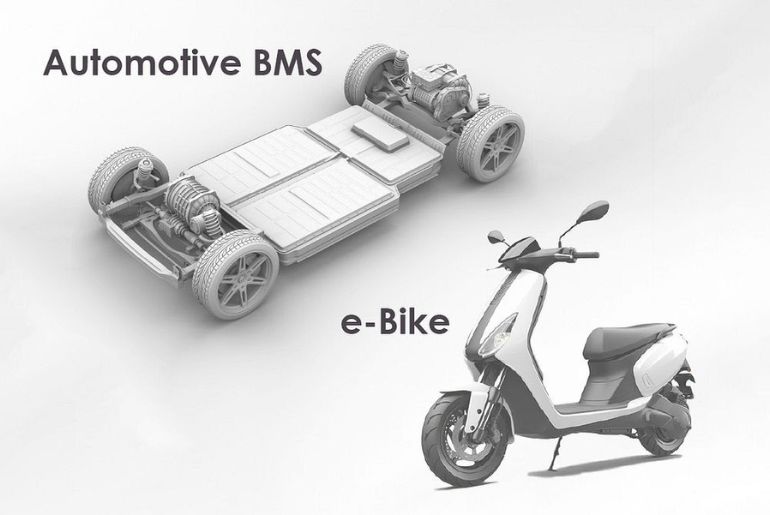ABLIC, a group company of MinebeaMitsumi Inc. has launched the S-19193 Series of automotive 3 to 6-cell battery monitoring protection ICs. BMS (Battery Management Systems) for EVs and e-Bikes, etc. require functional safety compliant with ISO26262, which is a standard for functional safety in road vehicles.
The acceptance criteria for functional safety are fail-safe (the ability to return to a safe state in the event of a failure or malfunction), fail-operational (the ability to continue operation even in the event of a failure or malfunction), and fail-degraded (the ability to continue operation with decreased functionality). In the past, the conventional method of achieving (1) fail-safe functional safety was to use a microcontroller (MCU) together with a high-performance IC called an “analog front-end” (AFE) to monitor automotive battery overcharge and overdischarge conditions.
Under the conventional fail-safe methodology, the safety of a driver is ensured by “returning to a safe state”, i.e. stopping the vehicle in the event of an actual failure or malfunction, and there was no requirement for continued monitoring of batteries after the vehicle had safely stopped.
However, with the evolution of automated driving technologies, it is expected that there will be an increase in the number of cases where the system, rather than the driver, handles any problems that occur, so the fail-operational and fail-degraded methodologies, which allow for continued operation even in the event of a failure or malfunction, are becoming increasingly important.
The S-19193 Series automotive 3 to 6 cell battery monitoring protection ICs launched are products developed in ISO26262 compliant processes and are equipped with functions for monitoring automotive battery overcharge and overdischarge.
There are also examples with AFE and MCU internal monitoring functions configured as primary and secondary, but these are mainly for failure and fault detection through mutual monitoring and are insufficient for backup of functionality. In addition, internal redundancy also poses a risk of “joint failure”, where loss of functionality occurs simultaneous to the occurrence of a failure, however with the S-19193 Series, the secondary monitoring can be made completely independent from the primary monitoring to also mitigate the risk of joint failures occurring.
The S-19193 Series also makes it possible to configure a stand-alone operation secondary monitoring circuit which does not require MCU control, which can also contribute to a reduction in the number of design processes.
A Safety Manual is also available for download to support BMS functional safety design using the S-19193 Series. The product is also compliant with the PPAP (Production Part Approval Process) established by the U.S. Automotive Industry Action Group (AIAG).


